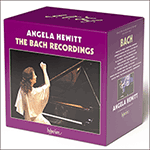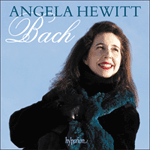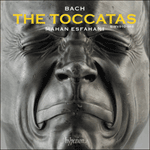
Welcome to Hyperion Records, a British classical label devoted to presenting high-quality recordings of music of all styles and from all periods from the twelfth century to the twenty-first.
Hyperion offers both CDs, and downloads in a number of formats. The site is also available in several languages.
Please use the dropdown buttons to set your preferred options, or use the checkbox to accept the defaults.

| Mahan Esfahani (harpsichord)» More |
from notes by Angela Hewitt © 2002
extrait des notes rédigées par Angela Hewitt © 2002
Français: Isabelle Battioni
aus dem Begleittext von Angela Hewitt © 2002
Deutsch: Viola Scheffel
 Bach: Angela Hewitt – The Bach Recordings Bach: Angela Hewitt – The Bach Recordings‘One of the record glories of our age’ THE SUNDAY TIMES. For the first time ever, Angela Hewitt’s complete recordings of the Bach keyboard works on Hyperion are presented in one collection of 27 CDs. This covers nearly 25 years of Angela’s Bach re ...» More |
 Bach: Angela Hewitt plays Bach Bach: Angela Hewitt plays BachAngela Hewitt’s acclaimed recordings of Bach on the piano have received the highest critical acclaim and found their way into thousands of homes, selling nearly 400,000 copies since her recording of the Inventions burst onto the scene in 1994. Now ...» More |
 Bach: The Toccatas Bach: The ToccatasThe exuberant vitality of Bach’s toccatas here provides the perfect showcase for the interpretative flair of Mahan Esfahani.» More |

